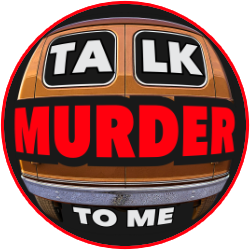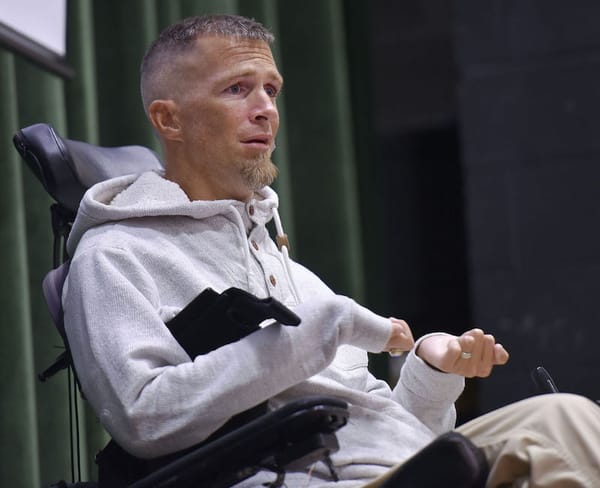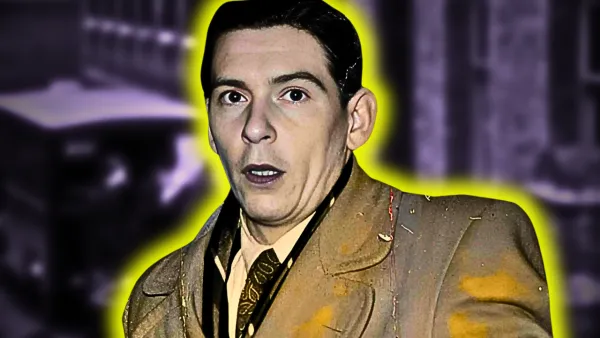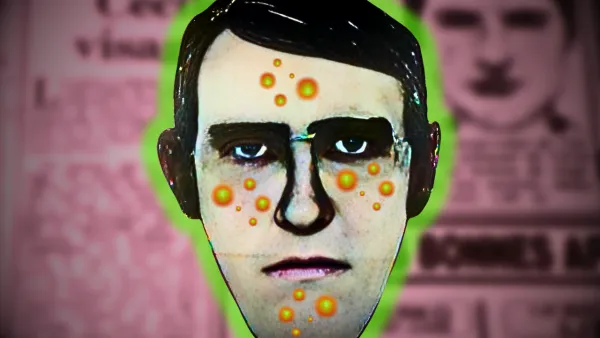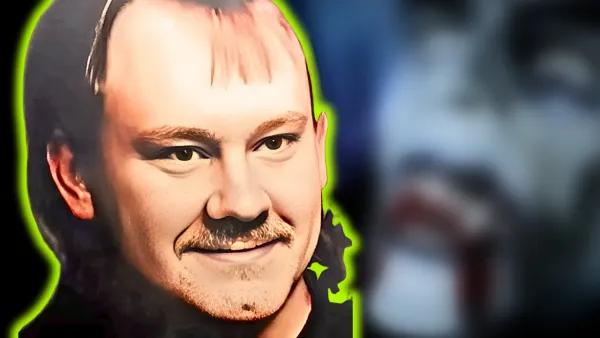Bob Berdella Snapped Polaroids During The Sadistic Torture Of Six Men

From 1984 to 1988, Bob Berdella, ‘The Kansas City Butcher’, killed six men, each aged 18 to 25. In his midtown Kansas City home, Berdella tortured and drugged them, then took polaroids of them in agony. After they died, he dismembered their bodies and mixed the parts with his trash.
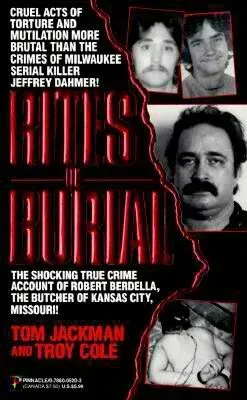
With his confession, Berdella, 40, avoided the death penalty, instead agreeing to live out his life in prison. During more than 20 hours of interviews conducted over six months in two Missouri penitentiaries, Bob Berdella talked incessantly about what he called his penitence. In animated conversations, the balding, mustachioed Berdella discussed his beliefs but rarely ventured explanations for his crimes. Instead, he would lower his eyes and run his fingers through wiry, salt-and-pepper hair.
The tears that occasionally marked early interviews vanished as the months went by, replaced by increasingly intellectualized justifications for his actions. Despite his insistence that he’s contrite, Berdella has yet to explain what made him a murderer. “I’m the one that’s asking that question more than anybody else,” he said. “And you’ve got these people coming to me for the answer? I don’t know. Why the hell do people think I know? Do they really want to accept and believe that I planned all this, that I thought it out? Interesting concept.”
Berdella was convinced he had repented for the six murders he committed in his bedroom, where a sentimental crucifix hung on one wall, a reminder of his Roman Catholic upbringing.
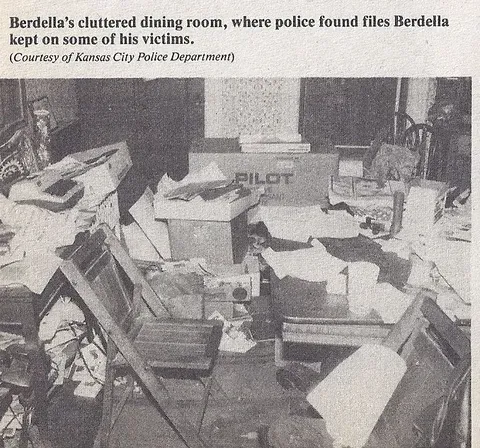
“Look into the background of some of the saints. They weren’t always saints,” he said. “I’m not going to try to label myself an expert on Christian religion or myth, but didn't Augustus knock off a few? Uh, was Peter always this, you know, saint? I think he had at least a couple of barroom fights under his belt. And it’s that aspect of going from guilty to sainthood that I think a lot of people skip over.”
Neighbors were shocked Bob Berdella seemed like just another aging hippie on the fringes of Kansas City’s art scene until the day before Easter in 1988. That day, a Chris Bryson, in Berdella’s bedroom, squirmed to reach a book of matches, set fire to ropes binding his own wrists, then jumped from a second-story window. Dazed and wearing only a dog collar, he asked neighbors to call the police.
Bryson said Berdella had bound, drugged and tortured him for four days.
Of course, the neighbors were shocked. Since 1970, Berdella had been a quiet homeowner in Kansas City’s Hyde Park, an aging area east of the Nelson Atkins Museum of Art. In the years after he put a $100 down payment on the rambling, repossessed, three-story house, Berdella helped build the gentrifying neighborhood. He was active in the area crimewatch program and a vocal advocate for the halfway houses that dotted surrounding blocks. Berdella made no efforts to hide his homosexuality or his outspoken opinions, but didn’t strike anyone as criminally unusual. In fact, he seemed to transform his life, turning from a ‘60s rebel into an entrepreneur.
First Kill
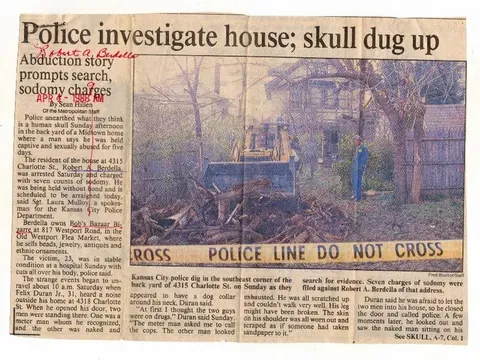
Among his new acquaintances were the Paul Howell family, his neighbors at the flea market and at home. If there was tension between Bob Berdella and Howell, other dealers in the flea market attributed it to some personal dispute.
Everyone knew a strong, arrogant streak tempered Berdella’s general affability. But he was a regular on the flea market’s potluck luncheon circuit.
Nobody thought he was nuts.
Except Paul Howell.
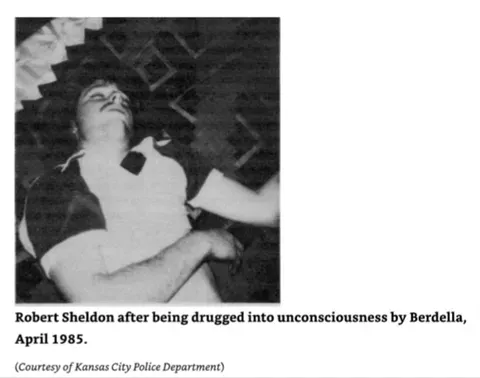
For nearly four years before Berdella’s arrest, Paul Howell considered him responsible for the disappearance in 1984 of Howell’s son, Jerry, 16. Howell watched Berdella’s house, across the street from Howell’s own, and kept an eye on Berdella’s business. Police questioned Berdella about Jerry Howell’s disappearance. But, they said, there wasn’t enough evidence to believe a crime had taken place. Jerry Howell died July 6, 1984, after less than 24 hours as Berdella’s captive. Berdella went on to kill five more times, all the while maintaining an illusion of normalcy in his eclectic little shop, Bob’s Bazaar Bizarre.
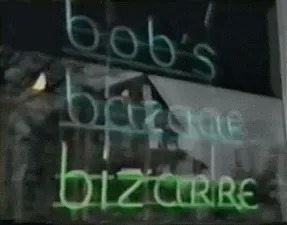
“You have to remember, at that time I felt dead,” Berdella said. “Let’s just say for a couple of years I was walking around in society functioning but not being alive. So any life I have developed after the arrest is kind of a rebirth for me.”
Berdella was arrested April 3, 1988, almost four years after Howell disappeared. As police swarmed around Berdella’s home after captive Christopher Bryson’s escape, Berdella, alerted by neighbor, left his customers browsing through glittering bracelets from India and rare Roman glass, drove home and turned himself in.
“I had the idea I would never see the outside again,” Berdella said.
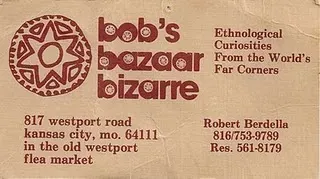
Intrigued repulsion In those first weeks at the Jackson County Jail, they held Berdella without bond on sodomy charges filed by Bryson, then 22, of Kansas City, Mo.
As investigators bulldozed Berdella’s yard for evidence, the neighborhood was clogged with sightseers. Suddenly seemed everyone in town had been a customer at Bob’s Bazaar Bizarre. Police found a skull in Berdella’s backyard and another in a closet. In his bedroom, they found polaroids of men in various stages of torture and some detailing drug injections Berdella had forced on his victims. The news made Berdella’s chubby frame and walrus mustache quickly familiar.
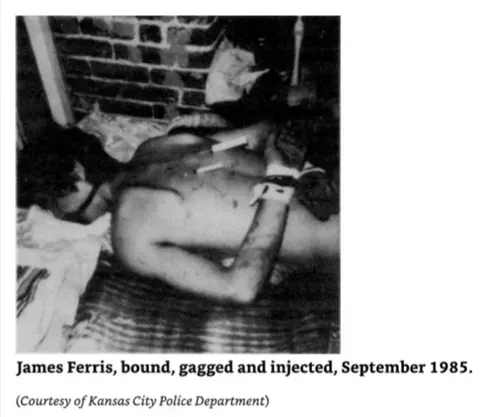
In August 1988, Berdella pleaded guilty to the Bryson sodomy charges and confessed to the murder a year earlier of former Wichitan Larry Pearson, 20, whom his family last saw in May 1987.
In October, Geraldo Rivera’s television special on satanism featured a speculative segment about Berdella. In mid-December, Berdella admitted to the other five murders.
"I’m not an evil person. I’m a person who’s done some very evil, Some very bad things.”
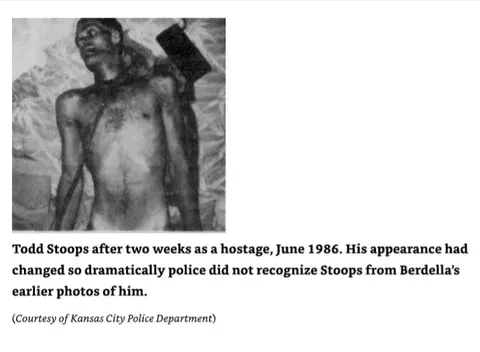
Coleman said. “He saw himself as a person as separate from what he was accused of and what he had actually done.” Berdella said he made a point of rejecting satanism as a motive in his confession, preferring mental illness. As evidence that he’s not a devil worshiper, Berdella pointed to a police photo taken in the bedroom where he committed the murders. “A crucifix. You notice it’s not up- side down or anything. Come on, folks. That was the crucifix off of my father’s casket.”
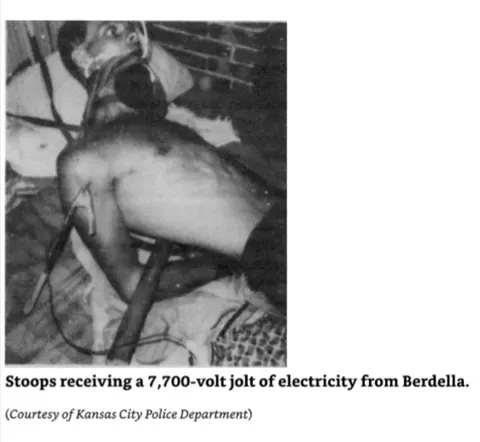
Berdella’s father died of a heart attack at age 39, when Berdella was 16. “He’s talked about it... the anger he expressed over the death of his father,” Coleman said. “And maybe it’s a combination of anger at an early death of a parent.... He probably had a great deal of anger he couldn’t express.” Berdella won’t talk about the 1965 death of his father, nor recount much of his life before then.
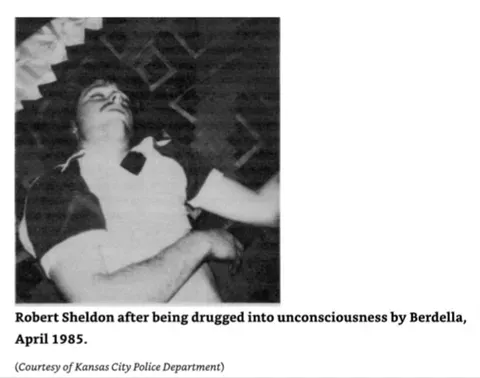
After his high school graduation in 1967, Berdella left home. He saw his move to Kansas City as a kind of quest, though he didn’t know where it would lead him.
Berdella envisioned himself as a teacher, even a guru of sorts, to young men he encountered while working in restaurants, or later, in his shop. He became fascinated with superstitions, mythic religions, and alchemy.
“He saw himself as someone seeking the essence of life,” said Coleman, the pastor. “And that allowed him to experiment on people. And in the same way to express his anger toward people who didn’t agree with him, didn’t submit to him.”
The Wichita Eagle 22 Oct. 1989

